Saint Benedict of Norcia, Patron Saint of Europe, throughout his life he fought against the devil he cast out in the name of the Cross. This is how the Saint Benedict medal inspired an Italian craftsman.
Saint Benedict of Norcia is not only famous for the so-called medal of Saint Benedict, the subject of this article. Patron of Europe,He was first of all a hermit, having chosen to live the first part of his life in Subiaco in an inaccessible cave. He then moved to Vicovaro, where he became a spiritual guide for some monks, and finally to Cassino, where he remained for thirty years to preach the Word of God and where he gathered many proselytes. At Cassino Saint Benedict also founded a monastery destined to become famous in the history of Christianity, and laid down his famous rule, which we can summarize in the motto ‘Ora et labora‘.
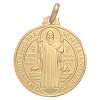
This rule based on prayer and work, has become the most widespread among monks around the world. This rule was revolutionary for its time. Before Saint Benedict, being a monk meant leading one’s life in almost total isolation, practicing the mortification of the flesh, undergoing fasting and privation. An admirable intent, but that according to the Holy Umbrian did not bring great benefit to God and much less to the Church.
For this reason, St Benedict proposed a new way of praying, alongside the solitary prayer of the community, shared with the Brothers, and associating it with singing. He also encouraged the monks to alternate their work with prayer, making it just another way to honor God and celebrate his greatness. This rule included the most noble works, such as that of scribes, and scribes who took care of the great libraries, to safeguard the ancient manuscripts. But every work done within the community was elevated to the rank of a valuable contribution to the spiritual practical life of all.
Precisely this new model of monastic life led to the proclamation of Saint Benedict as Patron of Europe. It was in fact largely thanks to the monks that the Europe of the Middle Ages, despite the barbarian invasions and the decadence of the Roman Empire, survived carrying out models and laws of life and civilization.
Another essential element of the cult of this Saint is the Medal-Cross of Saint Benedict. Several times during his life Saint Benedict found himself having to fight against the devil, his temptations and the evil influences. This history of fighting evil makes him the first exorcist in history, and that legacy survives in the medal that bears his name. Even today, the Saint Benedict medal is one of the most widespread sacred symbols and loved by the faithful, and is considered a precious and indispensable tool to protect themselves from evil thanks to the help of Jesus.
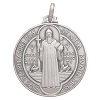
Just the cross-medal brings us to the topic of today’s article: the sacred creations of the company Germoglio.
The cross-medal of Saint Benedict
The cross-medal of Saint Benedict shows on one side a cross on which is engraved the motto of the Benedictine order: “Pax” (Peace). Around the cross there is a circle of letters, or the initials of the words that make up one of the prayers of protection and exorcism from evil considered among the most powerful and effective.
On the other side there is Saint Benedict in monastic clothes, holding in his right hand the Cross and in his left an open book: the Benedictine Rule. Around him are engraved other words of protection, linked to the episodes of his life in which he faced and defeated the Devil.
The Saint benedict’s medal was approved in 1742 by Pope Benedict XIV, to meet the increasing devotion to the Saint and this powerful symbol. The Pope granted the medal and the crucifix in which it was set (the “Crucifix of the Good Death”) a plenary indulgence.
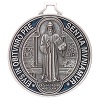
Even today the Medal of Saint Benedict is one of the most powerful sacred objects of the Church, especially at the point of death.
In the past, the medal of Saint Benedict could only be blessed by the bishop or his delegate priest, or by the Benedictine abbot or his delegate Benedictine monk. In the ancient Roman Benediction it is indicated that this blessing can only be done by a bishop. The same type of blessing is reserved for the Miraculous Medal of Rue du Bac.
The cross-medal of San Benedetto made by the company Germoglio di Conegliano (TV) was born from the passion and desire to create a unique object, which was at the same time a symbol of faith and an example of Italian craftsmanship of excellence.
The Germoglio was the first Italian company to produce and market the famous Cross-Medal of Saint Benedict. Germoglio was the first to insert the medal of Saint Benedict inside a crucifix.
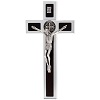
In 1990 Father Pellegrino Ernetti, Benedictine monk of the monastery of San Giorgio in Venice, as well as official exorcist of Venice and the area, asked Giovanni, the future founder of the company, to create a crucifix that also contained the medal of Saint Benedict.
John had recently changed his life. A pilgrimage to Medjugorje had led him to conversion and to embrace the path of Christian life. He had to consider this request as a sign in his journey of faith.
After some attempts, Giovanni decided to create a real company to fulfill the request of Father Pellegrino. In 1994 he opened the VAT number and in 1998 he began to produce the cross-medal of Saint Benedict.
The first crosses were made entirely of brass. Then over time other sizes, models and materials were developed.
The Germoglio crosses-medals differ from the others in a series of details and details that express clearly and unequivocally their artisanal origin.
An important detail is that the medal is not trivially glued, but set at the intersection of the arms of the cross, behind the head of the Savior, instead of the plate INRI.
In addition the mold of the medal with the various original symbols is on both sides and not only on the visible side. This allows, if desired, to extract the medal from the crucifix and use it as a real medal.
The choice to coin the medal separately from the cross stems from the fact that in the original blessing of the medal of Saint Benedict we speak of “numismata”, that is, of a medal, not of other objects. So for the blessing to be “valid” there must be a minted medal, not printed on the cross or other.
Another characteristic that gives more prestige to this product is that the body of Christ is not glued or welded to the cross, but literally crucified. In fact, the nails that secure your hands and feet to the frame are small loops.
Germoglio is also supplier of the abbey of Sacro Sepolcro, a very famous sanctuary, built over the cave where Saint Benedict had lived as a hermit. Hence the name given to the place of worship, since the cave was called precisely “Sacro Sepolcro”.
Germoglio also makes watches with the medal of Saint benedict, although they are very difficult to achieve. But this makes them so precious and special, a true source of pride for these artisans so proud of their work.
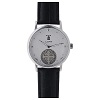
But let’s see in detail the products of this artisan company of excellence.
Material and workmanship
The crosses-medals of San Benedetto of the company Germoglio are made of wood and metal. In particular it is used solid wood, such as cherry, olive, beech, combined with other types of wood.
The wood is worked, shaped in the shape of a crucifix outside the company, while the final processing takes place inside Germoglio frieze, painting, sanding.
The painting is in three phases: first painting, sanding, second painting
As we have already written, the crucifix is pierced, the body of Christ and the medal nailed.
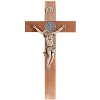
As for the metals used, the first crosses produced were made of brass. Today brass is still used, together with zamak, a zinc alloy combined with small percentages of aluminum, magnesium and copper. Brass and zamak are die-cast with large machinery and arrive in the company rough. They are partly processed in the company, partly outside, polished and galvanized. As for the for wood, all parts of the final processing take place in the company.
Aluminium is also processed in rods 6 meters long, which arrive at the company cut, processed and polished, sent to galvanize, then its processing is completed in the company.
As for the most precious models, in gold and silver, an external company realizes the crosses on the indication and design by Germoglio.
Some more modern models are also made of steel, with silver or brass details.
To work wood and metals need sophisticated machinery and special processes that must be carried out by experienced people and skilled craftsmen, able to translate ideas into products.
The lines
Currently the production of Germoglio is divided into three lines:
- CLASSIC: simple and cheaper;
- PRECIOUS:with precious cross-medals, in gold, silver, steel;
- PRESTIGE:larger crosses.

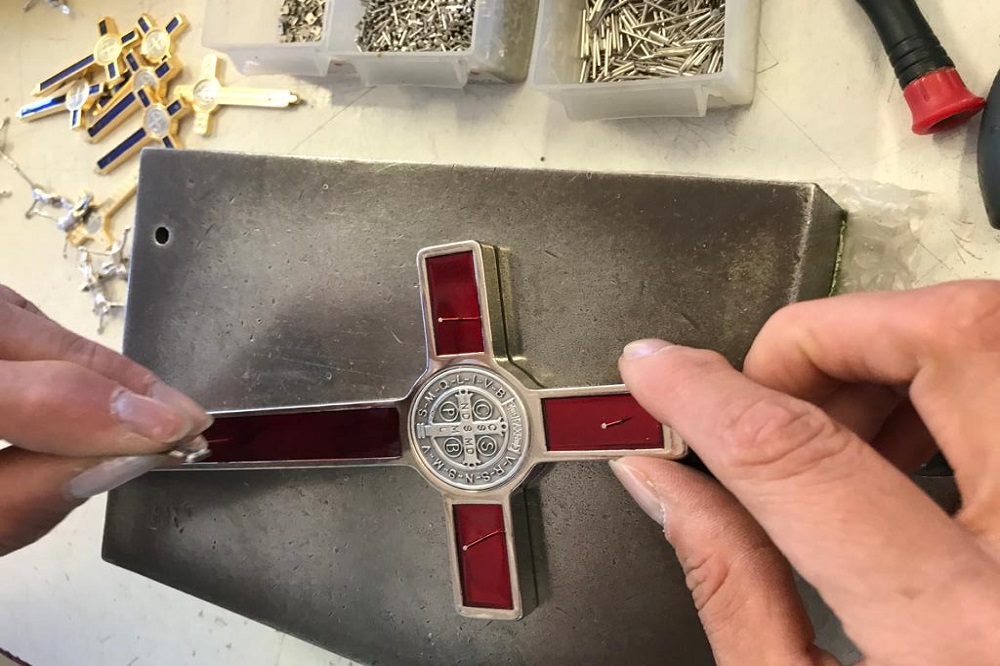


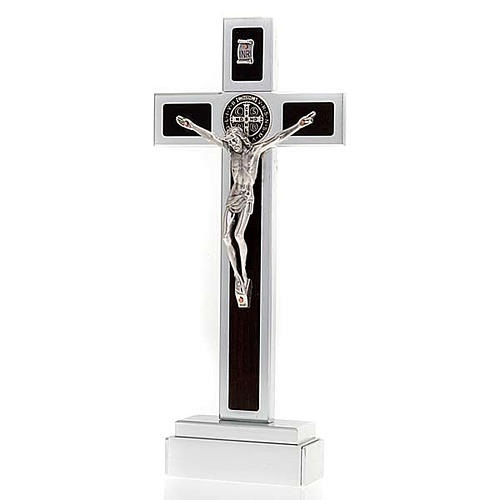
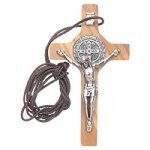

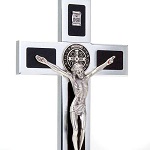
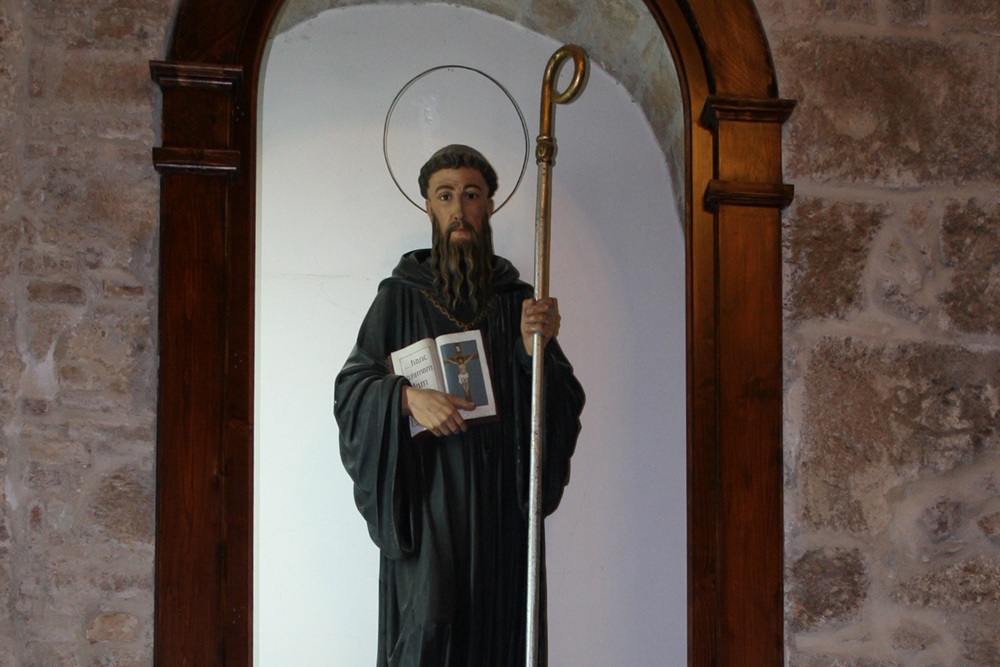
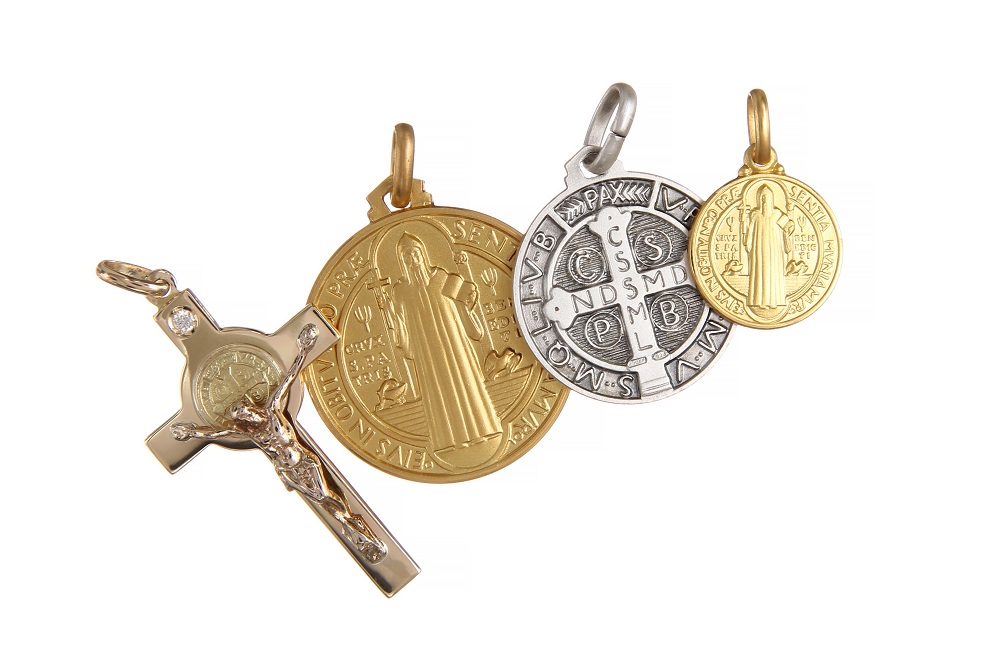
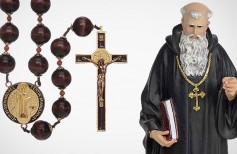
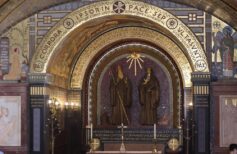


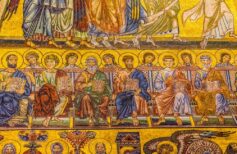
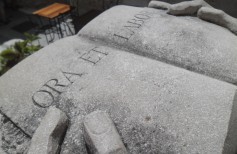
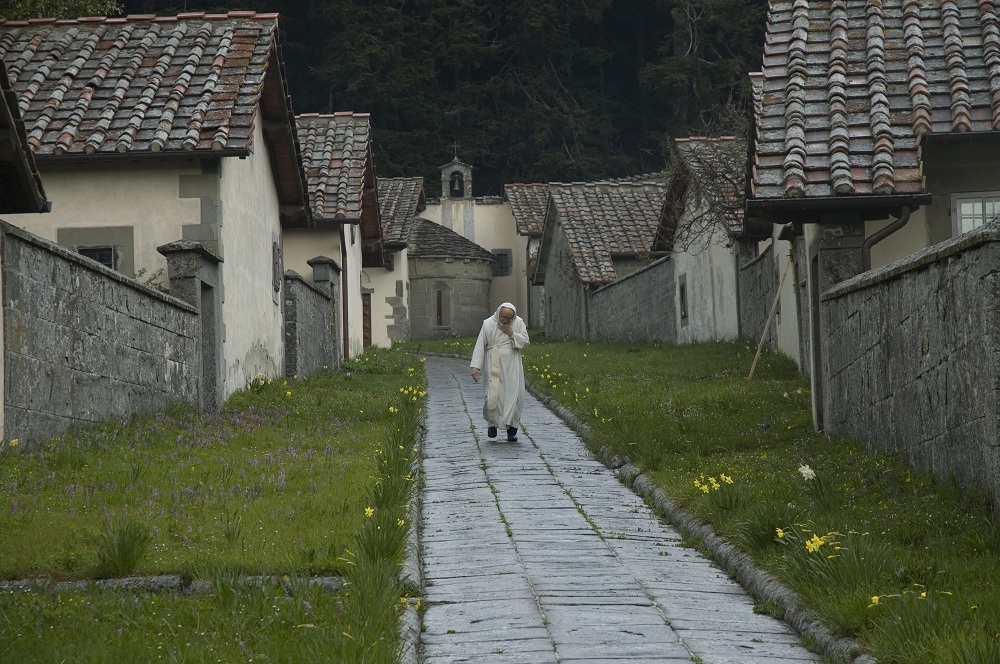








 19 March 2025
19 March 2025






